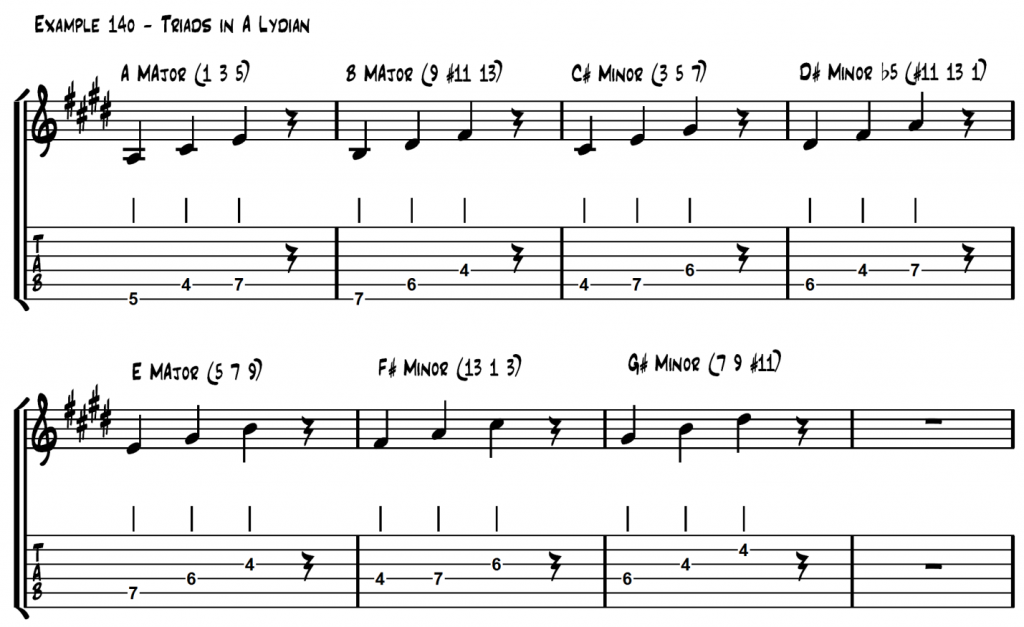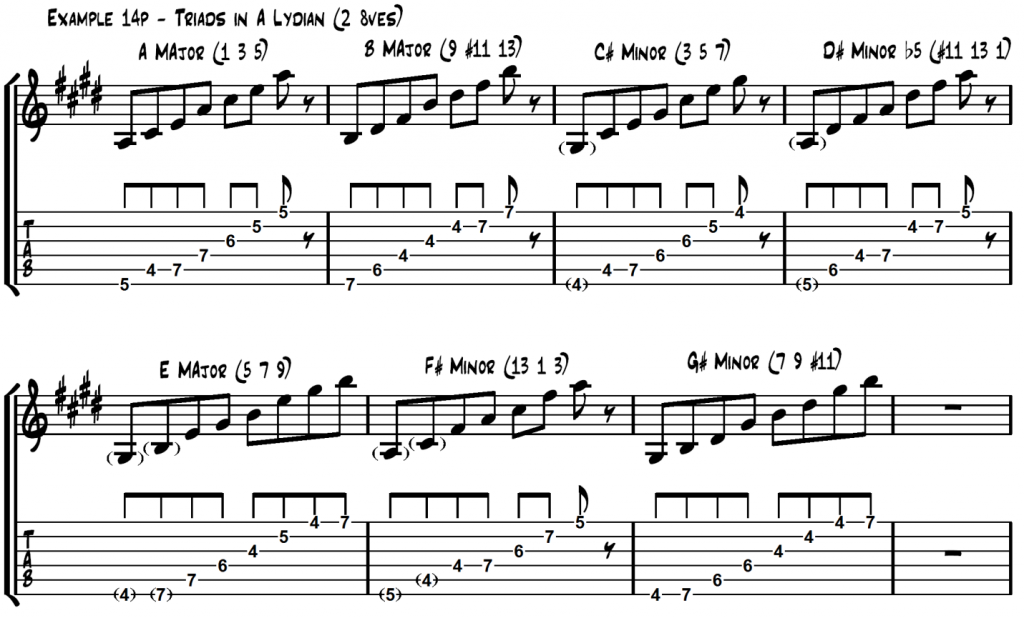The Lydian Mode for Guitar Part 2
Licks, Intervals and Triads
Continuing from last lesson, let’s look at 5 unique and useful Lydian Mode licks for Guitar.
5 Useful Lydian Licks
These lines are all included as audio examples and the Lydian backing track has kindly been provided by Quist.





Soloing Approaches to the Lydian Mode
The following pages once again discuss the various ‘layers’ of the Lydian mode, from 2 note intervals through to 5 note pentatonic scales. Any idea in the following section can be used as an isolated approach or in combination with any other concept.
2-Note Intervals





To begin with, I would advise you to study 3rds and 5ths. Don’t forget to try making patterns out of groups of intervals. A common idea is to ascend two intervals and descend the third. Also, each interval pair can be played backwards.
3-Note Triads
As discussed, we can isolate the individual triads that are built on each degree of the Lydian mode. By soloing with specific triads we can target or isolate particular scale tones while avoiding others. This creates a focused, angular melody that highlights the unique tonality of each mode. The triads built from the Lydian mode are:
| Scale Degree | 3 Note Triads Built in Lydian | Intervals Against Tonic |
| 1 | I major | 1, 3, 5 |
| 2 | II major | 9, #11, 13 |
| 3 | iii minor | 3, 5, 7 |
| #4 | #iv minor b5 | #11, 13, 1 |
| 5 | V major | 5, 7, 9 |
| 6 | vi minor | 13, 1, 3 |
| 7 | vii minor | 7, 9, #11 |
As one octave shapes in the first position, they are played:
 These can be played in 2 octaves in the following manner. (The lowest note in each shape is not always the root).
These can be played in 2 octaves in the following manner. (The lowest note in each shape is not always the root).

My favourite approaches are to play:
Minor triad on 7 (G# minor over A Lydian) (7, 9, #11).
Minor triad on 3 (C# minor over A Lydian) (3, 5, 7,).
These lessons on how to dissect modes for guitar are a sample of the much more comprehensive work, The Practical Guide to Modern Music Theory for Guitarists.
“The artists you work with, and the quality of your work speaks for itself.”
Tommy Emmanuel
© Copyright Fundamental Changes Ltd 2024
No.6 The Pound, Ampney Crucis, England, GL7 5SA
